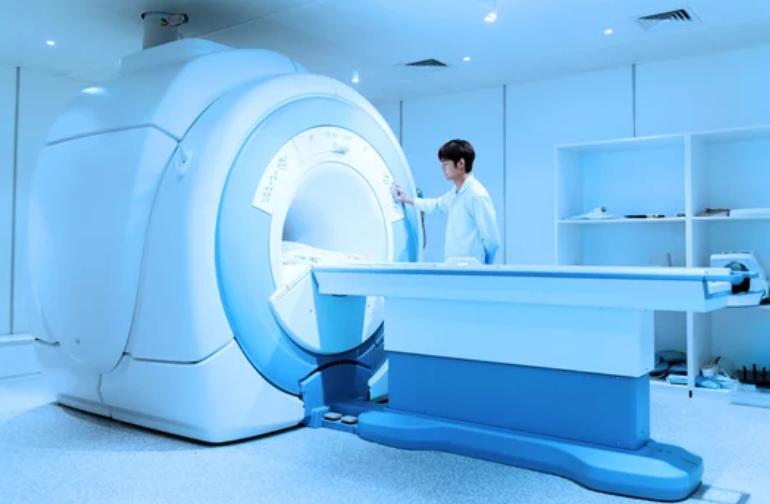Magnetic Resonance Imaging (MRI) has become a cornerstone of modern medicine, providing detailed visualization of tissues and organs without invasive procedures. As the technology evolves—introducing AI-assisted imaging, portable scanners, and advanced functional MRI—there is a pressing need to prepare the next generation of healthcare professionals to harness its full potential.
Medical education is now tasked not only with teaching traditional diagnostic principles but also with integrating emerging MRI technologies into the clinical training of doctors, radiologists, and allied health professionals.
1. The Expanding Role of MRI in Clinical Practice
Beyond Diagnosis: MRI as a Decision-Making Tool
Today, MRI is used not just for diagnosis, but also for:
- Treatment planning in oncology, cardiology, and neurology
- Monitoring therapy response in chronic diseases
- Predictive diagnostics through advanced imaging biomarkers
Medical students and residents must learn how MRI data influence clinical decision-making, helping doctors choose targeted therapies and reduce unnecessary interventions.
2. Integrating MRI into Medical Curricula
From Textbooks to Hands-On Experience
Traditional medical education often relies on textbook-based learning, which may not reflect the dynamic capabilities of MRI. To address this, programs are increasingly incorporating:
- Practical MRI workshops for hands-on scanning experience
- Virtual simulations and 3D reconstructions to visualize anatomy and pathology
- Case-based learning emphasizing MRI interpretation in real-world scenarios
This approach ensures that students develop technical proficiency and clinical reasoning skills simultaneously.
3. AI and Advanced Imaging Training
Preparing Doctors for the Digital MRI Era
Artificial intelligence is transforming MRI by:
- Enhancing image clarity and reducing scan times
- Assisting in diagnostic interpretation
- Predicting disease progression through algorithmic analysis
Medical education must include AI literacy, teaching students how to:
- Understand algorithm outputs
- Critically evaluate AI-driven recommendations
- Integrate AI insights into patient-centered care
Training in AI ensures that future doctors can collaborate effectively with technology rather than being replaced by it.
4. Cross-Disciplinary Learning and Collaboration
MRI as a Bridge Between Specialties
MRI education is inherently interdisciplinary, intersecting with radiology, biomedical engineering, neuroscience, and computer science. Medical schools are now emphasizing:
- Collaborative training modules with engineering and data science departments
- Joint research projects exploring novel MRI applications
- Workshops on hardware, software, and imaging physics
Such cross-disciplinary exposure prepares doctors to innovate in diagnostic workflows and contribute to MRI research.
5. Continuing Education for Practicing Clinicians
Lifelong Learning in MRI Technology
Given the rapid pace of MRI innovation, ongoing training is crucial for practicing physicians. Continuing medical education (CME) programs focus on:
- New MRI protocols and sequences
- AI-assisted imaging tools
- Portable and low-field MRI applications
- Advanced functional and quantitative imaging
These programs ensure that clinicians maintain competency and can adopt emerging technologies safely and effectively.
6. Ethical Considerations and Patient Communication
Balancing Innovation with Responsibility
MRI education must also cover the ethical use of advanced imaging, including:
- Informed consent for AI-assisted scans
- Data privacy and secure handling of imaging results
- Communicating complex imaging findings to patients clearly
Teaching ethical principles alongside technical skills prepares future doctors to use MRI responsibly and maintain patient trust.
7. Preparing for Global MRI Challenges
Access, Equity, and Resource Constraints
Medical education must also address global disparities in MRI access. Doctors trained in resource-limited settings should learn to:
- Operate portable or low-field MRI units
- Maximize diagnostic yield with limited scans
- Utilize tele-radiology and cloud-based analysis for remote interpretation
This prepares physicians to provide high-quality care regardless of infrastructure limitations.
8. MRI Research and Innovation in Education
Fostering the Doctors Who Innovate
Exposure to MRI research encourages students to explore new applications and technological improvements. Educational programs increasingly emphasize:
- MRI-based clinical trials
- Imaging biomarker discovery
- Development of AI algorithms for diagnostics
By combining clinical training with research, medical education fosters future leaders in MRI innovation.
Conclusion: Equipping Doctors for a High-Tech Future
The integration of MRI into medical education is no longer optional—it is essential for training doctors who can meet the demands of 21st-century healthcare. Through hands-on experience, AI literacy, cross-disciplinary collaboration, and ethical instruction, medical schools can prepare physicians to maximize the clinical and societal benefits of MRI.
By investing in advanced MRI training today, we ensure that tomorrow’s doctors are technically proficient, ethically grounded, and innovation-ready, capable of delivering smarter, more precise, and patient-centered care in an increasingly technology-driven medical landscape.
Also Read :
